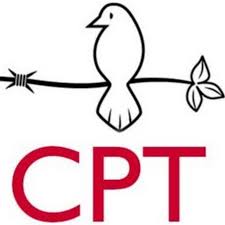Border Lives: Village Kani Spi
From Kani Spi
On February 14, 2008, CPT met Mr. Idris in the town of Choman. He is an IDP from the village of Kani Spi now living in town. Mr. Idris reported that Kani Spi is on fertile land in mountainous country close to the Iranian border. Iranian rockets targeted the village in 2007 and 2008, killing many cattle, setting fire to the crops and terrifying the children, so the families now live 14 km away in Choman.
On August 23, 2009, Iran started shelling from 6 p.m. until noon of the next day. Sporadic shelling continued for the next five days. The shelling hit no buildings, but it covered all of the surrounding fields. CPT visited Kani Spi on October 22, 2009. Mr. Idris and his friends showed CPT the remnants of a dozen rockets collected from the heavy shelling. They explained that their crops were lost because they weren’t there to water them. Milk products spoiled, and it was difficult on the animals. No one was hurt, but it was terrifying for the villagers.
A local official reported that loss was not only to the farmers, but also to the whole of society. “When people had to leave their homes and villages, they left agricultural land, bees, orchards, nuts, vegetables—all good quality products. This results in the society having to import more of these goods, which hurts the economy. If they need to move into town, they often find no work and need aid from the government. The average family displaced from the bombings loses $15—20,000 a year. The Kurds have lost a trillion dollars from [the bombings]. The bombings also threaten the KRG government. Turkey and Iran don't want [the KRG] to be stable, and want to show their power.”
The official also reported that in this Qandil area, the villages suffering the most bombing are Enza, Zargaly, Razgai, and Marado. Those with the most damage are Weza, Kani Spi, Maran, Enza, Mawatawa, Kodo, Lolan, Horna, and Darband.
~CPT (2010) "Where there is a promise, there is a tragedy", p.18.
* download the English report at:
or
From Kani Spi
